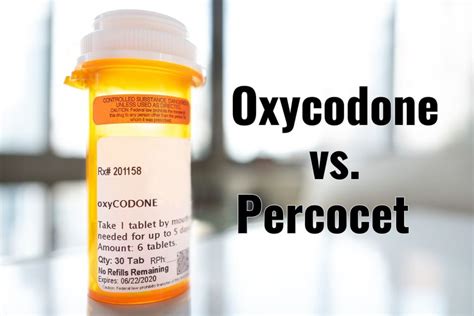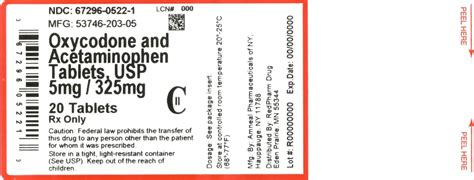Intro
Discover the risks and benefits of combining Oxycodone and Tylenol, a potent pain relief duo. Learn about dosage, side effects, and interactions, including acetaminophen overdose, opioid dependence, and liver damage, to ensure safe and effective pain management.
The combination of oxycodone and Tylenol, also known as acetaminophen, is a widely used prescription medication for managing moderate to severe pain. Oxycodone is an opioid pain reliever, while Tylenol is a non-opioid analgesic. When used together, they can provide effective pain relief for various conditions, including post-surgical pain, chronic pain, and pain associated with cancer. In this article, we will delve into the details of this combination, its benefits, and its potential risks.
The importance of understanding the oxycodone and Tylenol combination lies in its widespread use and potential for misuse. As the opioid crisis continues to affect communities worldwide, it is crucial to educate patients and healthcare providers about the safe use of opioid-containing medications. By exploring the mechanisms of action, benefits, and risks associated with this combination, we can promote responsible prescribing and use practices.
Pain management is a complex issue, and finding the right treatment approach can be challenging. The oxycodone and Tylenol combination offers a convenient and often effective solution for patients experiencing moderate to severe pain. However, it is essential to weigh the benefits against the potential risks and consider alternative treatment options. In the following sections, we will examine the working mechanisms, benefits, and risks associated with this combination, as well as provide guidance on safe use and alternative treatments.
Oxycodone And Tylenol Mechanism Of Action

The oxycodone and Tylenol combination works by targeting different pain pathways in the body. Oxycodone is an opioid agonist that binds to opioid receptors in the brain and spinal cord, reducing the transmission of pain signals. Tylenol, on the other hand, is a non-opioid analgesic that works by inhibiting the production of prostaglandins, which are chemicals that cause pain and inflammation. When used together, oxycodone and Tylenol can provide a synergistic effect, enhancing pain relief and reducing the need for higher doses of either medication.
How Oxycodone Works
Oxycodone is a semi-synthetic opioid derived from thebaine, a naturally occurring opioid alkaloid found in the opium poppy. It works by binding to opioid receptors in the brain and spinal cord, activating the body's natural pain-relieving mechanisms. Oxycodone is available in various formulations, including immediate-release and extended-release tablets, capsules, and liquid solutions.How Tylenol Works
Tylenol, also known as acetaminophen, is a non-opioid analgesic that works by inhibiting the production of prostaglandins in the brain and spinal cord. Prostaglandins are chemicals that cause pain and inflammation, and by reducing their production, Tylenol can help alleviate pain and reduce fever. Tylenol is available in various formulations, including tablets, capsules, liquid solutions, and suppositories.Benefits Of Oxycodone And Tylenol Combination

The oxycodone and Tylenol combination offers several benefits, including:
- Effective pain relief: The combination of oxycodone and Tylenol can provide effective pain relief for moderate to severe pain.
- Reduced risk of addiction: The addition of Tylenol to oxycodone may reduce the risk of addiction, as it can help reduce the dose of oxycodone required for pain relief.
- Convenience: The combination of oxycodone and Tylenol is available in a single tablet or capsule, making it easier to take and reducing the risk of medication errors.
- Cost-effective: The combination of oxycodone and Tylenol may be more cost-effective than using separate medications, as it can reduce the overall cost of treatment.
Indications For Use
The oxycodone and Tylenol combination is indicated for the management of moderate to severe pain, including:- Post-surgical pain
- Chronic pain
- Pain associated with cancer
- Pain associated with injuries or trauma
Risks And Side Effects Of Oxycodone And Tylenol Combination

While the oxycodone and Tylenol combination can be an effective treatment for pain, it also carries several risks and side effects, including:
- Addiction: Oxycodone is a Schedule II controlled substance, and the risk of addiction is high, especially with long-term use.
- Respiratory depression: Oxycodone can cause respiratory depression, especially when used in high doses or in combination with other central nervous system depressants.
- Liver damage: Tylenol can cause liver damage, especially when used in high doses or for extended periods.
- Gastrointestinal side effects: The combination of oxycodone and Tylenol can cause gastrointestinal side effects, including nausea, vomiting, and constipation.
Contraindications
The oxycodone and Tylenol combination is contraindicated in patients with:- Hypersensitivity to oxycodone or Tylenol
- Respiratory depression
- Acute or severe bronchial asthma
- Paralytic ileus
- Liver or kidney disease
Safe Use And Storage Of Oxycodone And Tylenol Combination

To ensure safe use and storage of the oxycodone and Tylenol combination, follow these guidelines:
- Use the medication only as directed by your healthcare provider.
- Store the medication in a secure location, out of reach of children and pets.
- Do not share the medication with others.
- Do not use the medication for longer than prescribed.
- Monitor your liver and kidney function regularly while using the medication.
Alternative Treatments
Alternative treatments for pain management include:- Non-opioid analgesics, such as ibuprofen or naproxen
- Muscle relaxants, such as cyclobenzaprine or metaxalone
- Anticonvulsants, such as gabapentin or pregabalin
- Physical therapy or occupational therapy
- Alternative therapies, such as acupuncture or chiropractic care
Conclusion And Final Thoughts

In conclusion, the oxycodone and Tylenol combination is a widely used prescription medication for managing moderate to severe pain. While it can be an effective treatment, it also carries several risks and side effects. To ensure safe use and minimize the risk of addiction, it is essential to follow the guidelines outlined in this article and to consult with your healthcare provider regularly.
We invite you to share your thoughts and experiences with the oxycodone and Tylenol combination in the comments section below. If you have any questions or concerns, please do not hesitate to reach out to us. Additionally, if you found this article informative and helpful, please share it with others who may benefit from this information.
What is the recommended dose of oxycodone and Tylenol combination?
+The recommended dose of oxycodone and Tylenol combination varies depending on the individual patient and the severity of their pain. It is essential to follow the dosage instructions provided by your healthcare provider and to not exceed the recommended dose.
Can I use the oxycodone and Tylenol combination for chronic pain management?
+Yes, the oxycodone and Tylenol combination can be used for chronic pain management. However, it is essential to use the medication under the guidance of a healthcare provider and to monitor your liver and kidney function regularly.
What are the potential risks of using the oxycodone and Tylenol combination?
+The potential risks of using the oxycodone and Tylenol combination include addiction, respiratory depression, liver damage, and gastrointestinal side effects. It is essential to follow the dosage instructions provided by your healthcare provider and to monitor your health regularly while using the medication.
